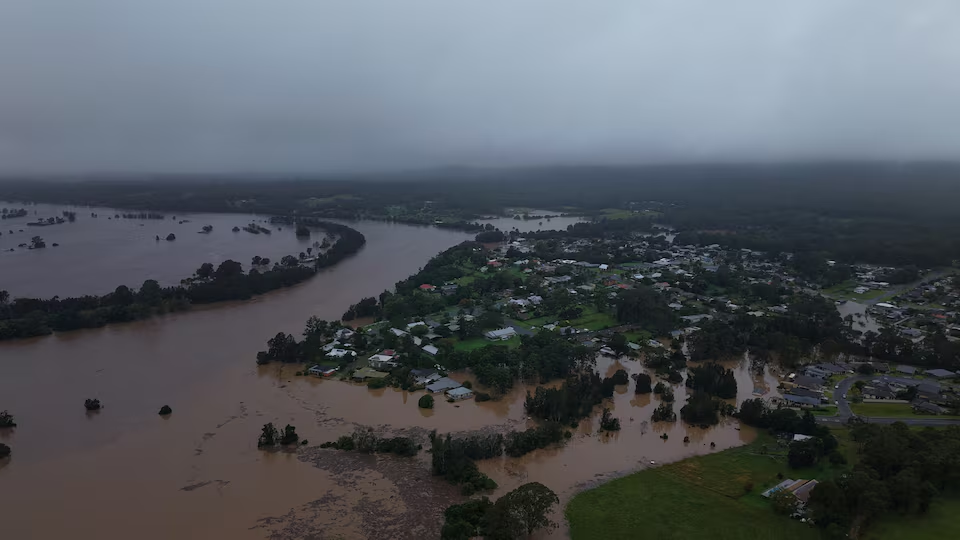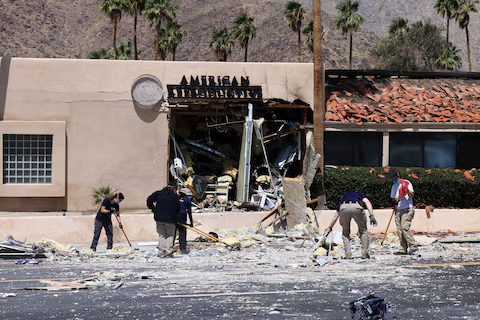Emergency services in eastern Australia launched large-scale rescue operations on Wednesday, May 21, 2025, after intense flash floods engulfed multiple inland towns, trapping residents on rooftops and cutting off entire communities. Torrential rains in New South Wales (NSW) and parts of southern Queensland led to the worst regional flooding seen in over a decade.
At least eight towns, including Moree, Narrabri, and Walgett, have been severely impacted, with roads submerged, power lines downed, and thousands of homes without electricity. Authorities have declared disaster zones in affected areas, warning that more heavy rainfall is forecast in the coming days.
“We’re seeing rivers rising faster than predicted. Some towns were swallowed in hours,” said NSW State Emergency Service (SES) Commissioner Carlene York. “Our crews are working around the clock, but the scale is immense.”
Rooftop Rescues and Mass Evacuations
In some communities, helicopters were dispatched to pluck residents from rooftops as floodwaters inundated entire blocks. Video footage showed emergency workers airlifting families, pets, and the elderly from submerged homes, while boats navigated city streets turned into rivers.
“We barely made it out,” said Moree resident Jason Ellis, who was rescued along with his family after their house was cut off by floodwaters. “One moment we were fine, the next we were chest-deep in water.”
Local officials said hundreds of people have been displaced, and evacuation centers are nearing capacity. Schools have been closed, and all non-essential services have been suspended in flood-affected areas.
Weather System Still Active
The floods are the result of a slow-moving tropical low-pressure system that has dumped more than 200 millimeters of rain in less than 24 hours across parts of inland NSW. Meteorologists say the weather event is intensified by lingering La Niña-like conditions, despite the transition to neutral patterns earlier this year.
The Bureau of Meteorology (BoM) has issued additional flood warnings for regions along the Namoi, Macintyre, and Barwon rivers, predicting further rises and downstream impacts by Thursday.
“The soil is already saturated, and catchments can’t take more,” said BoM spokesperson Lachlan Stone. “We urge everyone to monitor updates and evacuate if advised.”
Infrastructure Damage and Economic Impact
Infrastructure across the region has suffered major damage. Dozens of highways and rail lines have been closed, telecommunications are disrupted, and local supply chains — particularly for agriculture — are severely impacted.
Officials estimate tens of millions of dollars in losses for farmers, many of whom were preparing for winter harvests. This follows a cycle of extreme weather events — including drought, bushfires, and earlier floods — that have tested rural Australia’s resilience over the past five years.
🇦🇺 Federal and State Response
Prime Minister Mark Carney expressed solidarity with affected residents and pledged swift federal support, including disaster recovery payments and emergency funding for local councils.
“We are mobilizing all available resources to ensure people are safe and towns recover,” Carney said.
The Australian Defence Force (ADF) has also been deployed to assist with logistics and clean-up, and additional SES units from other states are being brought in to relieve overstretched crews.
Climate Questions Resurface
The disaster has reignited public debate about climate resilience and the government’s investment in flood mitigation, early warning systems, and infrastructure adaptation.
Environmental groups warned that such intense rainfall events are becoming more frequent due to climate change, and that Australia must urgently improve urban planning and water management strategies.
“This is not a freak event — it’s part of a pattern,” said Kirsten Farlow of the Climate Council. “We need bold climate action, not just disaster response.”
As waters continue to rise, residents across inland Australia face an anxious wait. For now, emergency teams are focused on rescuing the stranded, delivering aid, and keeping communities safe — even as the skies show no sign of clearing.
Source; Reuters



